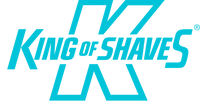
You don’t drive a car through a snowy field looking backwards.
Almost any activity, not just a high risk one, is easier when we can see what we are doing. All of our senses contribute, but the more visual information we have, the better our chances of success.
The designers of Concorde had many novel problems to overcome when developing the world’s first (and so far, only) supersonic airliner. One was the issue of the aircraft’s big nose. It had to be long and slender for maximum aerodynamic efficiency and high speed flight, but this would cause problems when landing. Approaching a runway at an inclined angle, tail down, nose up, the pilots would not have been able to see the runway – just the elongated pointy snout. Even with all the bells, whistles, gizmos and gadgets that can be found in an aircraft cabin, it helps to be able to see where you are going.

The solution was to develop a nose that could be hinged downwards by 12.5º when landing, allowing the pilots to see over the top of it. It’s a simple idea – just move the nose out of the way – but one that involved much work to make it possible. It also had the added benefit of making Concorde more elegant, more birdlike, as it did so: Wings back, feet out, head bowed, eyes on the target.
One of the great joys of sailing a boat is the challenge of getting from A to B. The wind, waves, tide and currents – the natural forces that make your boat move – are rarely perfectly aligned to push you along in your preferred direction.
Instead, the wind might be trying to push you sideways while the tide pushes you backwards. To reach your destination you need to balance these forces by adjusting the direction the bow is pointing and the angle of the sails. It’s a bit like a plane landing in a crosswind. You have to aim off centre to come in straight. This is easier said than done as the factors you’re adjusting for are mostly invisible or hard to see.

The principles of using the wind and the water to provide propulsion are the same now as they were 8,000 years ago, when people first started sailing. In that time, people have found ways to see the invisible and make the challenge easier.
Flags tell us the way the wind is blowing, and objects lined up on the shore will indicate if we are drifting on the tide. Compasses help us keep our sense of direction when there’s no landmarks in sight by responding to the earth’s electromagnetic field. Waves, seaweed, fish, birds and clouds all provide information about weather systems or landmasses hidden over the horizon.
These visual cues are tricky to see in the dark, of course. For that, we have lighthouses and other illuminated navigation marks. You don’t have to be able to see everything around you, but provided you can see the lights you should be able to work out where you are.
We have Thomas Edison to thank for the first functional electronic lighting system. Prior to lightbulbs we relied on sunlight, moonlight and fire to see by. Bulbs have since progressed so even the darkest night can be lit up like day.
The desire to see that which is hidden from us is evident throughout history. People look up to the stars or down at their tea leaves to see the future. Dowsing rods cut from a hazel tree are used to divine for hidden water sources. Optical lenses, invented by the ancient Egyptians and Mesopotamians, allow us to look at small objects in great detail or make distant objects seem closer. For the past 800 years they’ve also been used to correct weak sight

Now, we can see things our eyes can’t process thanks to modern imaging technology that goes beyond the limits of the visible spectrum. We are able to see heat or distant stars with infra-red sensors. We see through flesh and bone with ultrasound, MRI, CAT scans and X-rays. We see underwater with sonar, and find buried villages or distant ships and aircraft with radar. We use lasers to create detailed maps, and beams of accelerated electrons to make the smallest particles appear 10 million times bigger than they are.

The recorded image – cave markings, etchings, drawings, painting, printing and cameras (still and moving, film and digital) – allow us to look into the past. In the last few years, small high-definition video cameras and affordable drones have enabled anyone to capture images that would have previously required specialist cameras, aircraft, and a team of people. Within moments those images can be shared with whoever we want, wherever we want, whenever we want. We are not limited by having to see something with our own eyes, at the time it happened. We can bear witness indirectly.
Given that striving to see and interpret the world around us has been so crucial to human development, it is a wonder we still do some things to make that difficult.
If you’re looking for that lost pack of drill bits, but can’t find them because the bike, ladder and camping equipment are in the way, then consider emptying the shed out first. Likewise, if your car keys have fallen into a ball pit you might stand a better chance of success if you chuck all the balls out, rather than fumble around blindly under the surface (though your popularity may suffer). To see what you’re working on, make sure you have a clear view by getting rid of things that obscure it.

The quote at the beginning of this article – You don’t drive a car through a snowy field looking backwards – was said by Will King, the founder of King of Shaves, exasperated that anyone would ever shave with foam.
Granted, shaving might not be as dangerous as driving in the snow, but being able to see what you’re doing is still important. If you can’t see what you’re doing you risk cutting yourself or leaving patches of stubble behind.

Shaving foam gets in the way and prevents you from seeing where you’re shaving. You can only see where you’ve already shaved. An oil or gel provides the same lubricating qualities that keep your razor gliding smoothly over your face, but won’t obscure your view.
The difference is clear to see.
This post is the fourth in a series commissioned from Jonathan S. Bean a freelance writer and charity fundraiser by King of Shaves.
